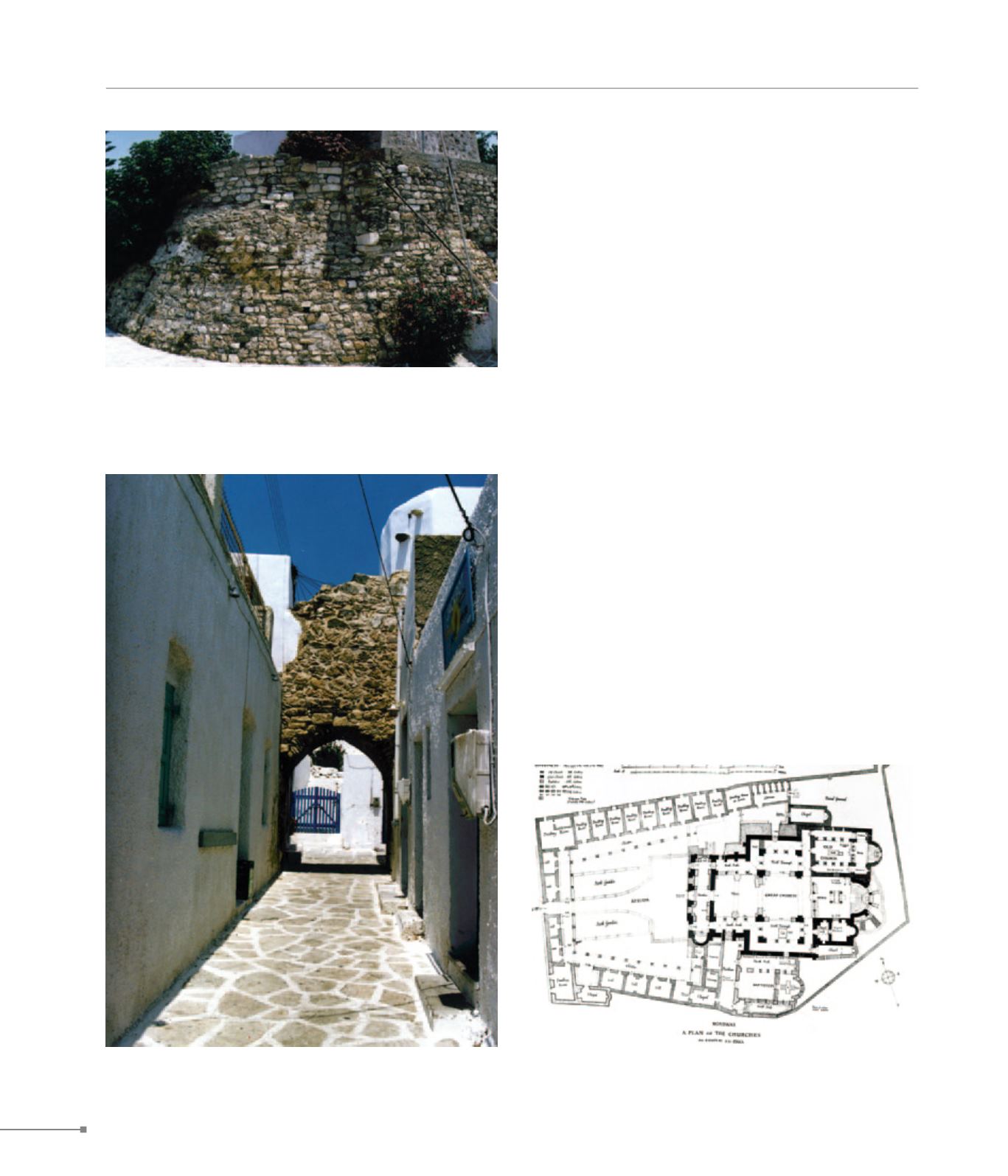
Antiparos.
Paros.
THE ISLANDS
362
587.
Antiparos.
Kastro on Antiparos (1) is an excellent example of a medi-
eval fortified village that was built in one phase according to a
plan, in order to accommodate the new settlers on the island.
It dates from the mid-15th c. and was probably constructed
between 1440 and 1446 by the Venetian nobleman Loredano,
Crousino Sommaripa’s son-in-law, who was the lord of Paros.
Kastro consists of a quadrilateral enclosure formed by a belt
of perimeter buildings with a circular tower in the middle. The
houses are three-storeyed, while the entrance is in the middle
of the S side.
588. Paros, Paroikia, Panagia Katapoliane or Ekatontapyliane, ground plan
(Πάρος, Παροικιά, Παναγία Καταπολιανή ή Εκατονταπυλιανή, κάτοψη)
587. Antiparos, Kastro, gate (Αντίπαρος, κάστρο, πύλη)
587. Antiparos, Kastro, tower (Αντίπαρος, κάστρο, ο πύργος)
588.
Paros.
The most important Early Christian monument in the Aegean
is the Panagia Katapoliane church, also called Ekatontapy-
liane, located in Paroikia (1). It includes a large, domed, cross-
shaped basilica dedicated to the Koimesis of the Theotokos,
the chapel of Saint Nicholas to the NE, contemporary with the
church, and the later baptistery to the S. The basilica dates
from the Byzantine Emperor Justinian’s time, circa the mid-
6th c. It has been built above an earlier three-aisled basilica
that lies on the mosaic floor of a secular building, perhaps a
gymnasium, of the early 4th c. According to tradition, the es-
tablishment of the Theotokos church was supported by impe-


